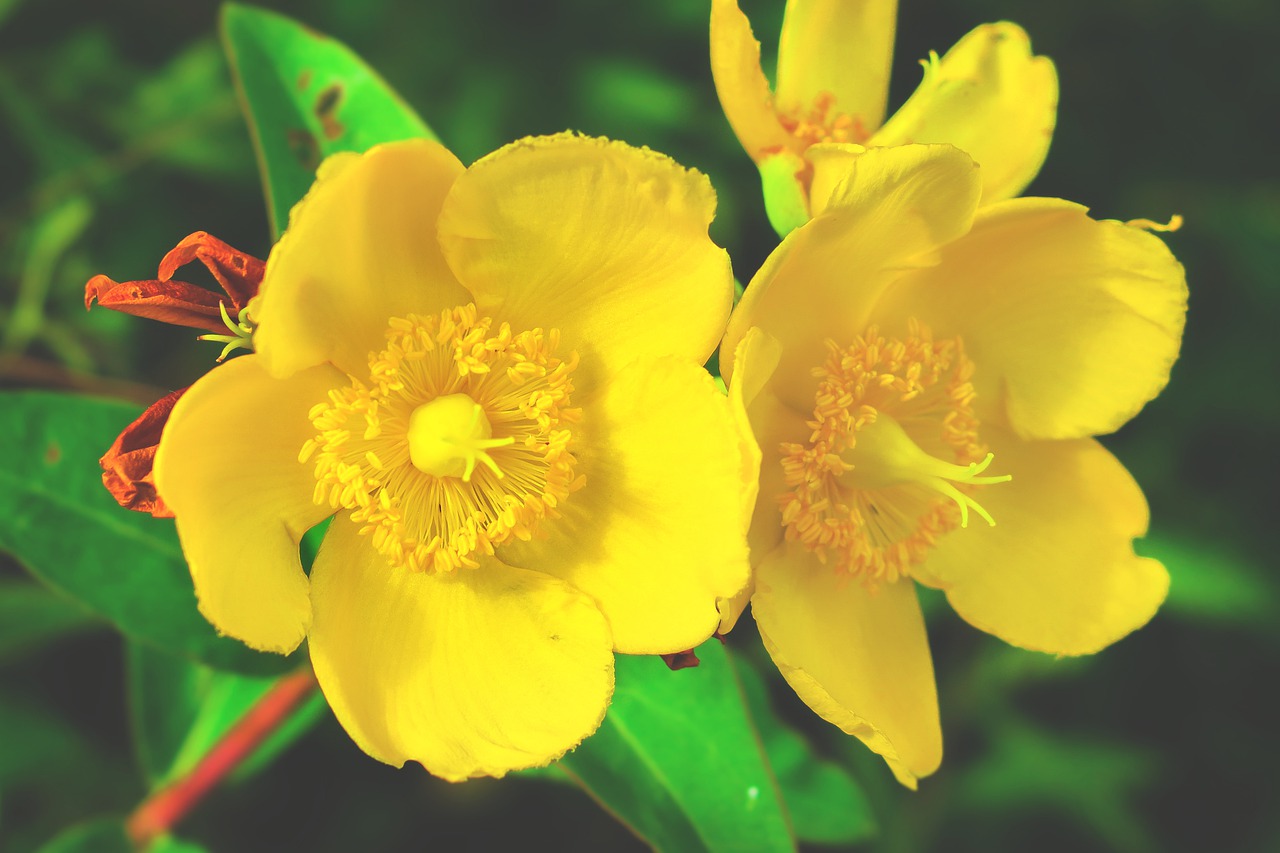Last Updated on February 15, 2022 by Real Men Sow
Hypericum varieties include about 400 plants, but only a handful of them are grown in the UK. Hypericum Hidcote, which produces masses of yellow flowers of medium size in July and August, is the most widespread of the group. It can be grown year-round and is very easy to maintain.

Quick Facts About Growing Hypericum Varieties
- They can reach a maximum height 1.5m/5ft, and have a wider spread.
- Although the green leaves are usually evergreen, they can be dropped for a few months in winters when it is very cold.
- They produce large quantities of yellow flowers that are medium-sized in July, which can last up to mid-August. The second flush is often found in late August or early September, but it rarely exceeds a few dozen.
- They thrive in partial shade, but can tolerate full sun and shade well.
- They can grow in most soil types, but they should be avoided in alkaline or acidic ones.
- Plants that are established do not require any attention except an annual pruning. You can do this with a hedge trimmer, or a pair of secateurs.
- They can withstand temperatures as low as -12°C and should be able to survive winter in almost any part of the UK.
- Although they can be grown in containers, this is not the best environment for them.
- Consuming certain parts of the plant may cause health problems. They can be used to treat depression, but it is important that you seek medical advice before using them.
- They are easy to grow and require no special knowledge.
- Warning: It is nearly impossible to kill an established hypericum without extreme measures. It can be cut down to the ground and it will grow back from its roots. When you plant one, make sure it stays there for a long time.
Planting Hypericum
Hypericum varieties can be planted year-round if it isn’t frozen and if you water well when dry. The best time to plant is between March and April and September through October. They can be planted in either full or partial shade, but they are very adaptable shrubs that can thrive in both shade and full sunlight. They can be planted in any soil condition, except for extremely acidic or alkaline.
This shrub is fast-growing and can grow to 40cm in height each year. When fully grown, allow for at least 1.5m / 5ft spread. Dig a hole twice as wide as the root ball. Add a few drops of blood, fish, and bone to the hole and then work it into the ground. Fill the hole with soil to the same depth as the pot. Firmly but gently fill the hole around the root ball. To settle the soil around the root ball, water well.
Taking Care of Hypericum Varieties
Once established, a Hypericum will take care of itself. They don’t need to be fed unless the soil is very poor in nutrients. Except in extreme drought, they don’t need to be watered. Council landscape gardeners are well aware of the toughness of these shrubs. Their only care is annual pruning.
Water younger plants, up to 2 years old, if the conditions are dry. It will establish a strong root system by receiving a twice-yearly feed of blood, fish, and bone in spring or autumn. The area surrounding the base of your plant should be free from grass and weeds. Remove any leaves or other debris that falls on the plant. This plant is immune to common diseases and pests.
Pruning Hypericum
If the stems have not produced buds during the current year, Hypericum Hidcote will flower. The standard advice is to prune the shrub in the spring or early March. The flowers will appear a week later than if the shrub was not trimmed.
It’s advised to trim them in the late summer or early autumn, when they are not producing anymore flowers. This is a better option than spring pruning. The flowers are produced slightly sooner, but the quality is just as good. The buds do not form on new shoots. They will continue to grow after the pruning.
Pruning is easy and you can use whatever tool you have, then cut to your desired shape. No matter how large the plant, it’s not difficult to do. Pruning established hypericums can speed up their growth so don’t be afraid to trim a bit more than you think necessary. A hypericum established can be trimmed to just a few feet in height and width without causing any damage.


